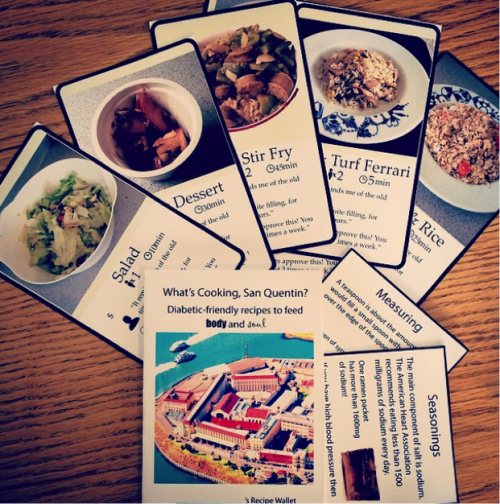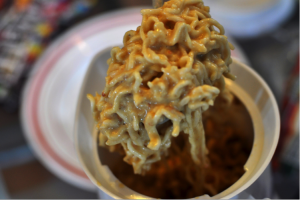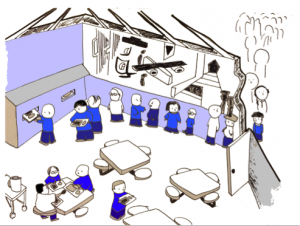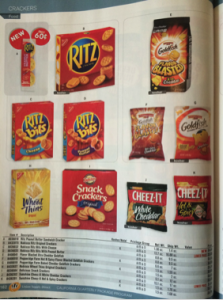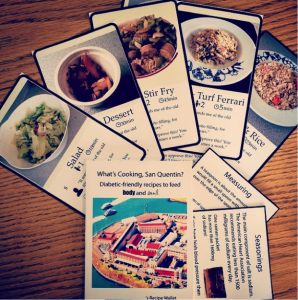Jessica Nguyen, Miho Kitagawa, and Kareem Raad worked for client San Quentin State Prison on a collaborative project with diabetic inmates and healthcare providers to improve the food environment at San Quentin State Prison.
What can you make with a hotpot and spoon? Apple pie? Pad thai? Inmates have found creative ways to cook these dishes with very little. One of the first things we learned during our project was that inmates cook in their cells. So what kinds of foods are prepared? In prison culture, inmates make spreads, which are meals shared with friends. Here’s one spread recipe: cook ramen, instant rice, velveeta cheese, refried beans, “meat logs”, mayonnaise, and juice from a can of jalapeño peppers in a hotpot until mushy; sprinkle in corn chips or fritos; wrap in tortillas and eat.
After hearing about these sorts of recipes we teamed up with a group of doctors at San Quentin to ask a question: “how might we facilitate healthier eating among diabetic inmates?” In our first meeting with inmates, they reminded us that, like any of us might say, being healthy means “living to a ripe old age”, and “being able to stay active as I grow older”.
Inmates want to be healthy, but it’s hard! Learning about their environment inspired us to come up with almost 100 different ideas, varying from institutional changes to smaller things we can try out. We learned that they get food from three different places: the cafeteria, through catalogues, and from a canteen shop located inside the prison. Cafeteria meals provide more carbohydrates than the average diabetic needs. Although some products sold in the catalogues and canteen are healthy, most are processed and unhealthy. In a highly controlled environment, this is the one place where they have choice. Throughout the course of the project, we often discussed whether this is a problem of access or behavior change, but it is not a black or white situation. Inmates are human, just like us, who sometimes show motivation to live long and well, but at other times, fall into the temptation of chocolate cake.
We collaborated with inmates and doctors to create diabetic-friendly recipes using the best available ingredients, a hotpot, and a spoon. Through this project, we are proud to have helped build a dialogue between inmates and healthcare providers that can lead to the continuation of this healthy cooking conversation.
It was a challenging process, but inmates and doctors inspired us. Did you know that inmates are actually pretty busy in prison? They have jobs and take classes. Still, they wrote down recipes, calculated the nutritional values, gave us feedback on our prototypes, and met with us every week with enthusiasm. This is not a project for them, but a project with them. At our last visit to San Quentin, we were happy to learn that the inmates and doctors will continue working on new recipe cards and will share them with other inmates to encourage healthier cooking in the prison.

